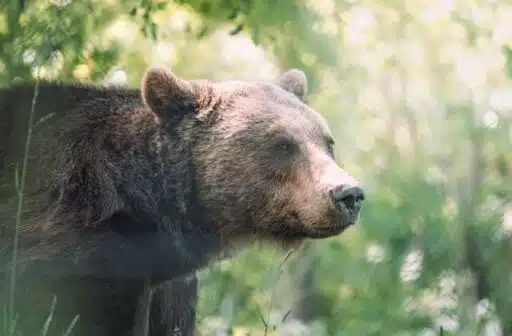Welcome to 10 Brown Animals.
Indeed, brown can be dull. However, it a solid color that expresses strength and reliability. A natural color, as the earth itself. As such, it represents the warmth, security, resilience, safety, and dependability of the earth.
You’ll see brown anywhere you go. The color also holds spiritual meaning in reminding creation that they came from and will return to ‘dust’. That is, it reminds us of our roots and our fate.
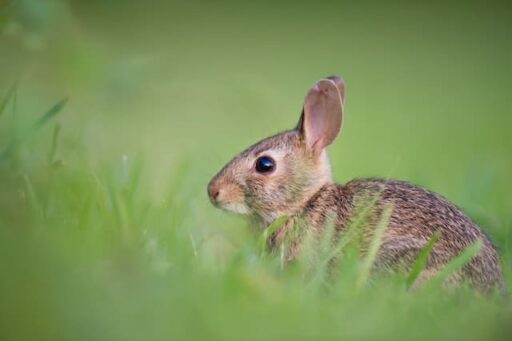
Brown is ubiquitous in the animal kingdom. Brown is one of nature’s colors and exists as a survival feature; the best way for an animal to camouflage is to blend. By camouflaging with the earth, brown animals can attack prey or hide from predators.
Brown animals have excellent temperature regulation. The color brown keeps them warm in cold seasons since it can absorb enough heat. Also, brown-colored animals won’t overheat in the hot seasons because the color lets them lose enough heat.
As common as the color is, unique brown animals exist worldwide. In this article, you’ll find 10 intriguing brown animals. You may know some, but wait until you see those you don’t.
Let the countdown begin!
10. Kodiak Bear
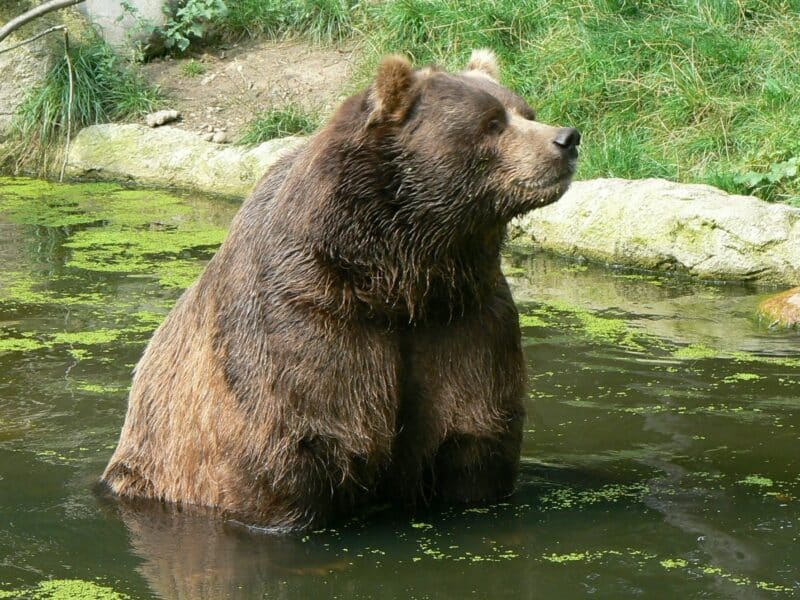
At number 10, we have the Kodiak bear, which is the largest subspecies of the brown bear. There are even arguments that it is bigger than the Polar bear. If such statements are factual, it implies that the Kodiak bear is the largest in the world. It’s so big that it weighs up to 1500 pounds. It’s 10 ft and 5 ft on its hind and all four legs, respectively.
Its exclusive habitat, the Kodiak Islands, is responsible for its name. The Kodiak Islands (Archipelago) are found south of the main landmass of Alaska. That is where they have been isolated from other bears for about 12,000 years. However, there are about 3,500 Kodiak bears and their population seems to be increasing.
The boars (male Kodiak bear), sows (female Kodiak bear), and cubs are similar and look like other brown bears. Their head is enormous and round but holds tiny eyes and small ears. They also have short and powerful limbs with paws that have non-retractable claws.
You’d think a bear like this would only love meat. However, that’s not the case with the Kodiak bear. It eats meat, but it eats plants more. In fact, a Kodiak bear would prefer to eat elderberries over meat. When it comes to meat, they prefer fish (especially salmon).
9. Alpaca
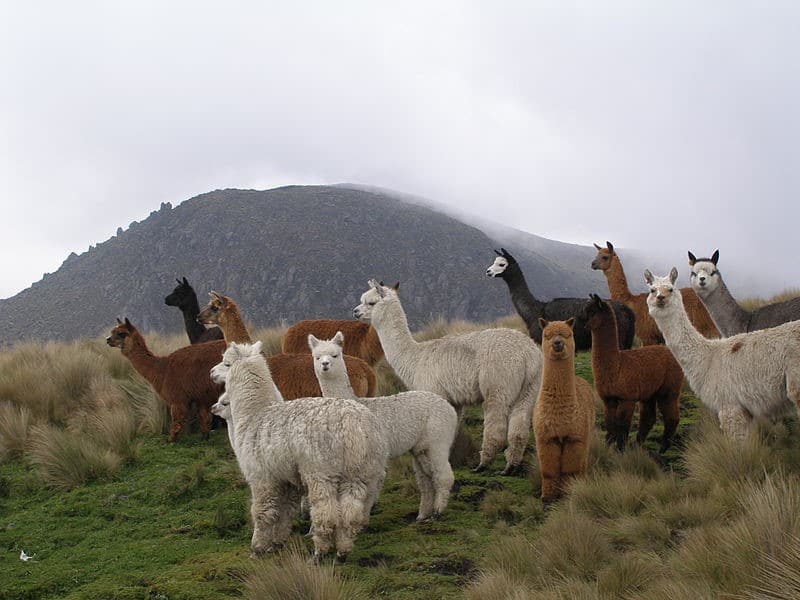
I know what you’re thinking, but Alpacas (Lama pacos) are not Llamas (Lama glama). An Alpaca is a South American camelid that weighs about 110 – 190 pounds. They exist in a size range of 2.7-3.2 feet and mountainous areas from Southern Colombia and Southern Ecuador to Northern Chile and Northern Argentina. You’re most likely to find them where tender grass can grow in those places.
An Alpaca is typically slender, with a small head and long neck, large pointed ears, long legs, and a short tail. Alpacas usually come in different (sixteen primaries) colors. These colors include light, medium, and dark brown; light, medium, and dark fawn, beige, white, black, and gray.
Two types of alpacas exist – Huacaya and Suri. The fiber of Huacaya is crimpy and grows perpendicular to the skin. Suri’s, on the other hand, is straight and extends toward the ground. Most Alpacas are Huacayas. The Suri cannot handle unfavorable conditions like the Huacaya. This proposes a reason why they are rarer.
Alpaca owners (mostly Andeans) domesticate them primarily for wool and then for meat. If you love Llama meat, you’ll love Alpaca meat even more. Other people keep them as pets and as show animals because they are adorable and docile. Their personality makes them easy to manage. Some people even take Alpacas as animal companions.
8. Bactrian Camel
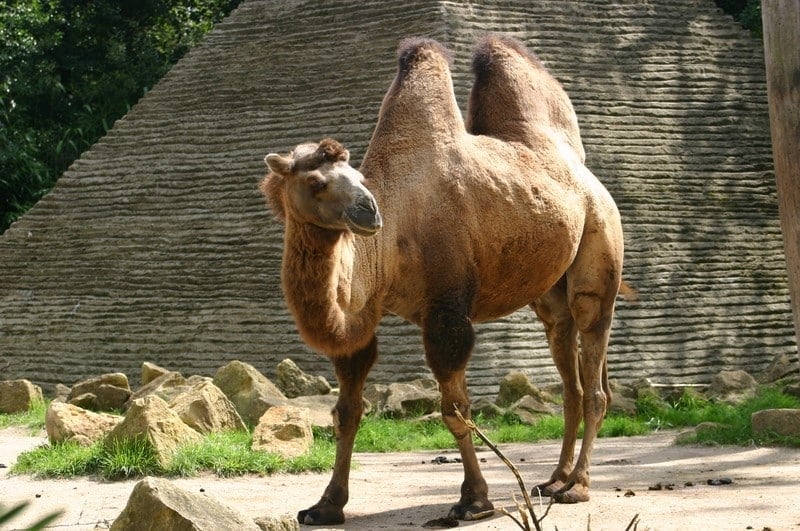
Also called Mongolian Camel and Domestic Bactrian Camel, the Bactrian Camel is found in the rocky deserts of East and Central Asia. They are large animals weighing from 660-2,200 pounds and over 7 feet tall at the hump.
Part of its appearance is that has two humps, unlike the typical single hump in other camel species. The function of a hump is to store fat. The stored fat can be converted to water and energy. That natural feature is the reason camels live and thrive in extreme environments. This impressive camel can withstand temperatures as low as -30°C (in winter) and as high as 50°C (in summer). They can also travel for weeks without water. They rarely sweat, so they don’t lose plenty of fluids. However, as they use up the fat stored in their humps, the humps become loose and saggy. When the Bactrian Camel re-ups its water levels, it can drink as much as 30 gallons of water in a short time.
The Bactrian Camel is diurnal (active during the day). They are omnivores but feed on plants mainly. They only eat meat if there’s no available plant food. Their mouths are strong such that they can crush ice blocks easily.
7. Bicolor Commodore
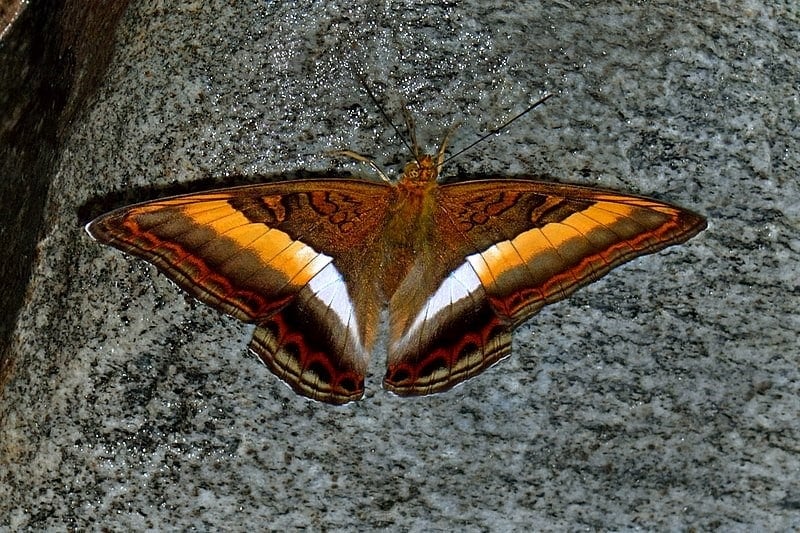
The Bicolor Commodore is a gorgeous butterfly, as seen in the picture. It is a species of butterfly called nymphalid, which is common in the tropical and subtropical parts of Asia (Southeast Asia). You can identify a Bicolor Commodore by its majority dark brown wings, which open up to bright yellow forewings. There is also a patch of white on the hind wings. The forewings and hindwings’ edges both have zigzag patterns.
There is little information about this beautiful butterfly, but it lives in the wild. In some parts of Asia, like India, the butterfly can fly up to altitudes as high as 8200 feet. That’s an imposing height for a butterfly to get to. It’s no wonder the Bicolor Commodore’s wings can span up to 3.25 inches.
The Bicolor Commodore is perhaps the most beautiful brown animal on our list. If you think otherwise, let’s know your thoughts in the comments at the end of the article.
6. Bongo Antelope
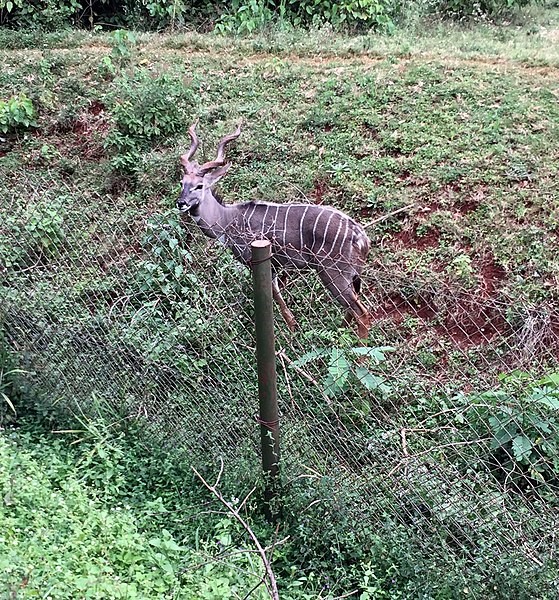
The scientific name of the Bongo Antelope is Tragelaphus eurycerus. It is the third-largest antelope species in the world. Its coat is reddish brown and has white stripes. It also has a thin mane along its back, white marks on its cheeks, a white crescent on its chest, and a white stripe between its eyes and nose.
Depending on their preferred habitat, there are two subspecies of the Bongo Antelope. The first is the Western bongo, which you’ll find in the lowlands. The other one, the Eastern bongo, is in mountain areas. The brown of the Eastern bongo is darker than that of the Western.
However, both subspecies are herbivores and nocturnal. They eat leaves, flowers, twigs, and thistles. It’s interesting to know, also, that they eat lightning-burned wood. Lighting-burned wood contains salt and minerals that are essential to the bongo.
5. Cedar Waxwing
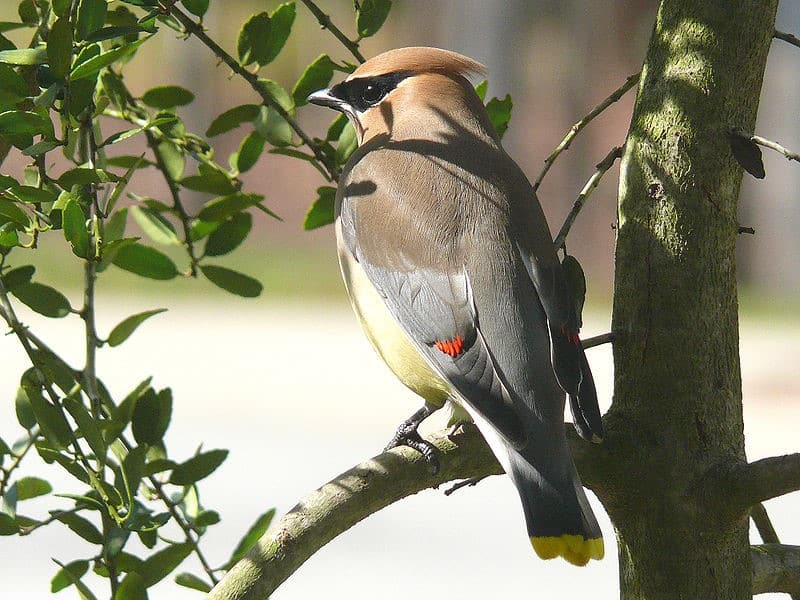
Have you seen a Cedar Waxwing before? If you have, you’ll see there’s a vast difference between it and other brown birds. There’s nothing ordinary about the Cedar Waxwing. Its color combinations alone are enough to leave you staring for minutes unending.
The Cedar Waxwing is a medium-sized bird. Its wing perfectly blends dark brown, black, white, and red. It also has a yellow body, which adds to its beauty.
The bird thrives in woodlands, areas with pines and cypress, and deciduous areas. They love it more if these places are along streams. That’s why you’ll mostly find them in Canada and northwest of South America. Its less common habitats include grasslands and sagebrush. More rarely, you may find them along desert washes.
The Cedar Waxwing is an omnivore but feeds primarily on plants. Its name originated from its love for cedar berries which are abundant in winter. It also loves strawberries, raspberries, and many more. They will plug these fruits, gather them, and swallow them all together. The bird eats insects in the summer as a protein supplement for its usual fruit diet.
The female Cedar Waxwing has the final say in choosing a place to set its nests. However, both sexes go looking for such nesting places together. When the female has decided, they both start working on the next. The building process takes between 5 and 6 days to complete.
Social as they are, you’ll most likely find a cedar Waxwing flocking with others.
4. Walrus
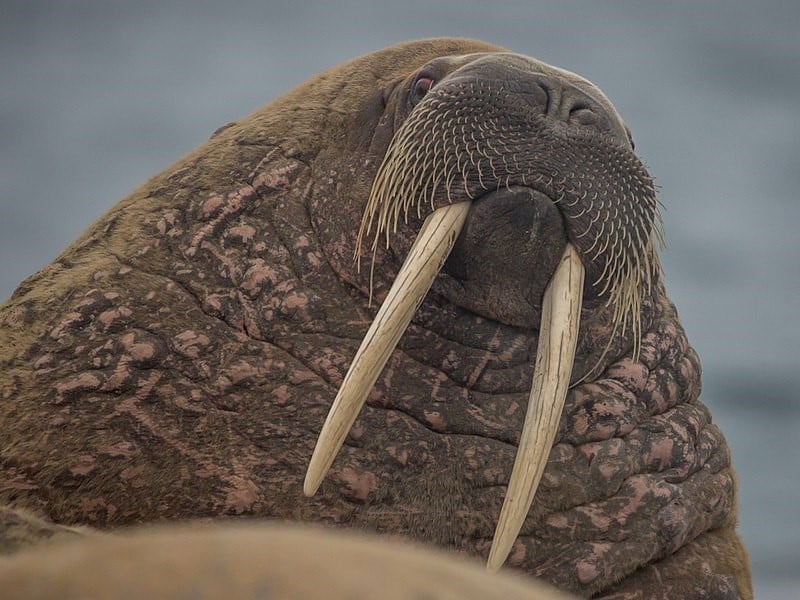
A Walrus is a brown animal in cold areas. You’ll find it with several others near the Arctic circle. As a very sociable animal, you’ll often find it in a group of up to 100 others. In such a group, they spend their time blaring at one another. They are extremely loud so that you know.
Apart from their loud snorts towards one another, you can quickly identify a Walrus from its physique. It weighs anywhere between 2,200 – 4,400 pounds which is twice that of Polar bears. They also stand at anywhere between 7.25 to 11.5 feet. This makes it the largest brown animal on our list. In addition to their massiveness, they have long white tusks, grizzly whiskers, flat flippers, and blubbery bodies. Also, their hides are wrinkled.
During the mating season, a Walrus gets very aggressive and employs its tusks. It uses its tusks to maintain its territory and protect the females. The tusk has more use than just being a tool of defense. A Walrus also uses its tusks to make its way out of frigid waters.
There are only two subspecies of Walrus – the Atlantic and Pacific Walruses. You can find the Atlantic walrus in the coastal areas of Canada. The Pacific Walrus, on the other hand, lives in and around the northern seas.
Walruses are carnivores; their favorite meal is shellfish. They can easily search and find shellfish with the help of their whiskers. That is because their whiskers are extremely sensitive. Other meals for the walrus include worms, snails, crabs, shrimp, clams, and mollusks.
3. Mink
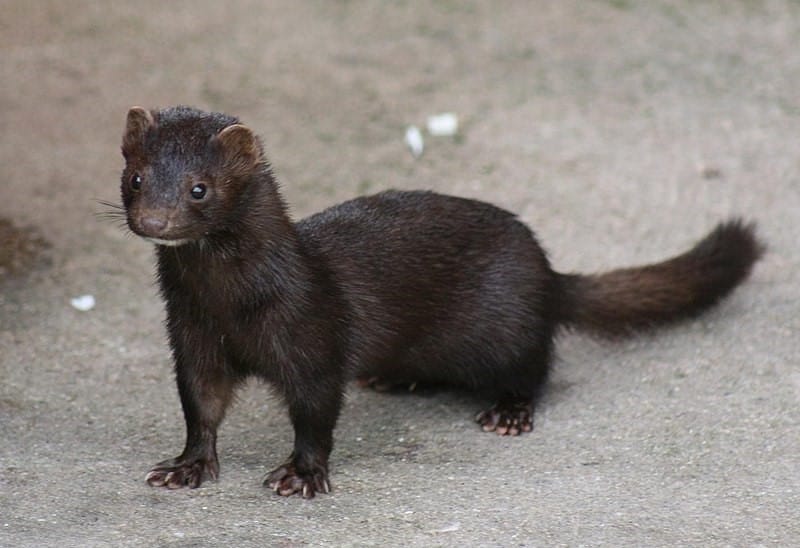
The Mink is common in North America, Europe, and Asia. They are semiaquatic creatures. Semiaquatic means that although they are primarily terrestrial, a mink spends a reasonable amount of time in the water. In other to balance their terrestrial and aquatic life, minks stay in areas with trees and water.
As its life demands, a mink knows how to swim, climb, jump, and dig excellently. They can swim up to 100 feet underwater.
Do not let its looks fool you; a mink is carnivorous and an aggressive predator. All it takes is a bite to the neck, and its prey dies. That should tell you how powerful their mouths and teeth are. Amongst others, they feed on fish, snakes, rabbits, and mice.
There are two subspecies of the Mink – the European and American mink. There’s no striking difference between the two other than where they are found.
2. Hoopoe
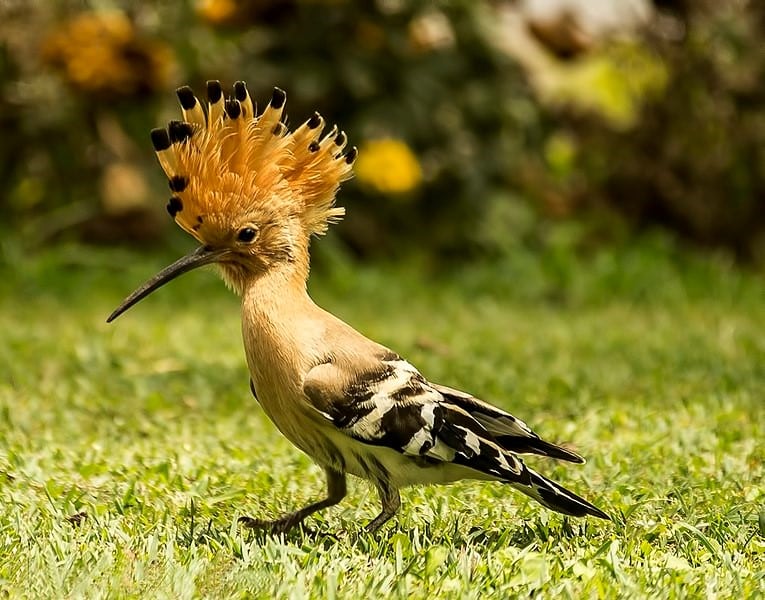
The Hoopoe is an exciting brown animal. Look how majestic it looks with its oddly beautiful head crest that could serve as a crown. It is common in Asia, Africa, and Europe. The Hoopoe is one of those birds that look for food on the ground. They are called ground-foraging birds.
There are three species of the Hoopoe – the African hoopoe, Eurasian hoopoe, and Madagascan hoopoe. A fourth specie – the Saint Helena hoopoe- went extinct a long time ago. All three existing species are reddish ( or sandy brown ) in color. Their wings, tails, and crests also have black and white stripes. They also have a long bill that they use in digging into the ground for small reptiles and insects. However, they are not carnivores because they also eat fruits and seeds.
Because they are ground-foraging birds, their brown is extremely useful. Even though they fly down to look for food, they can fly back up quickly. They are strong and excellent fliers.
1. Capybara
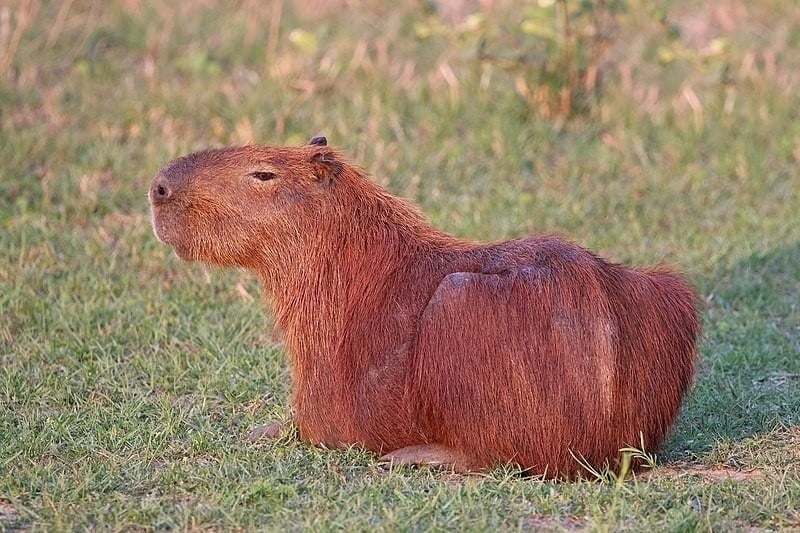
Finally! Our number one, it’s no other than the Capybara. A Capybara is also known as Carpincho or Water Hog. You’ll be surprised to know that a Capybara is a rodent. Yes, it’s true! The Capybara is the biggest rodent in the world. There are two species of the Capybara – Hydrochoerus hydrochaeris & isthmius. The former is larger than the latter.
Capybaras are semiaquatic and are found in the savannas and wetlands of Northern and central South America. Like our Mink above, these guys are great swimmers.
Capybaras are essentially herbivores; they feed on aquatic plants, grasses, and other plants. What’s strange is that they also feed on their feces. They feed on their feces to get proteins. The abundant proteins come about by the digesting action of microbes in their stomach. However, it’s only the morning feces they feed on.
You’ll find that their facial features, like their eyes, nose, and ears, are high up their head. This is so that they remain very alert. They are sweet prey for apex predators like jaguars and pumas. Therefore, their alertness can’t be overemphasized.
There we have it for our ten most curious brown animals. Did you find it enjoyable? Drop a comment below if you have anything to say.
Summary of 10 Brown Animals
And that’s it. Ten curious brown animals we’re sure you enjoyed reading about. Now move on to this immersive article about the biggest underwater animals in the world.
You’ll have the best time. Thank you for reading about 10 Brown Animals.
Join our Forum for free today!

- These are The 5 Largest Great White Sharks Ever Recorded - July 19, 2024
- The Surprising Benefits of Big Game Hunting - July 18, 2024
- $100k+ Hunting Experiences The Most Expensive Animals to Pursue - July 17, 2024

